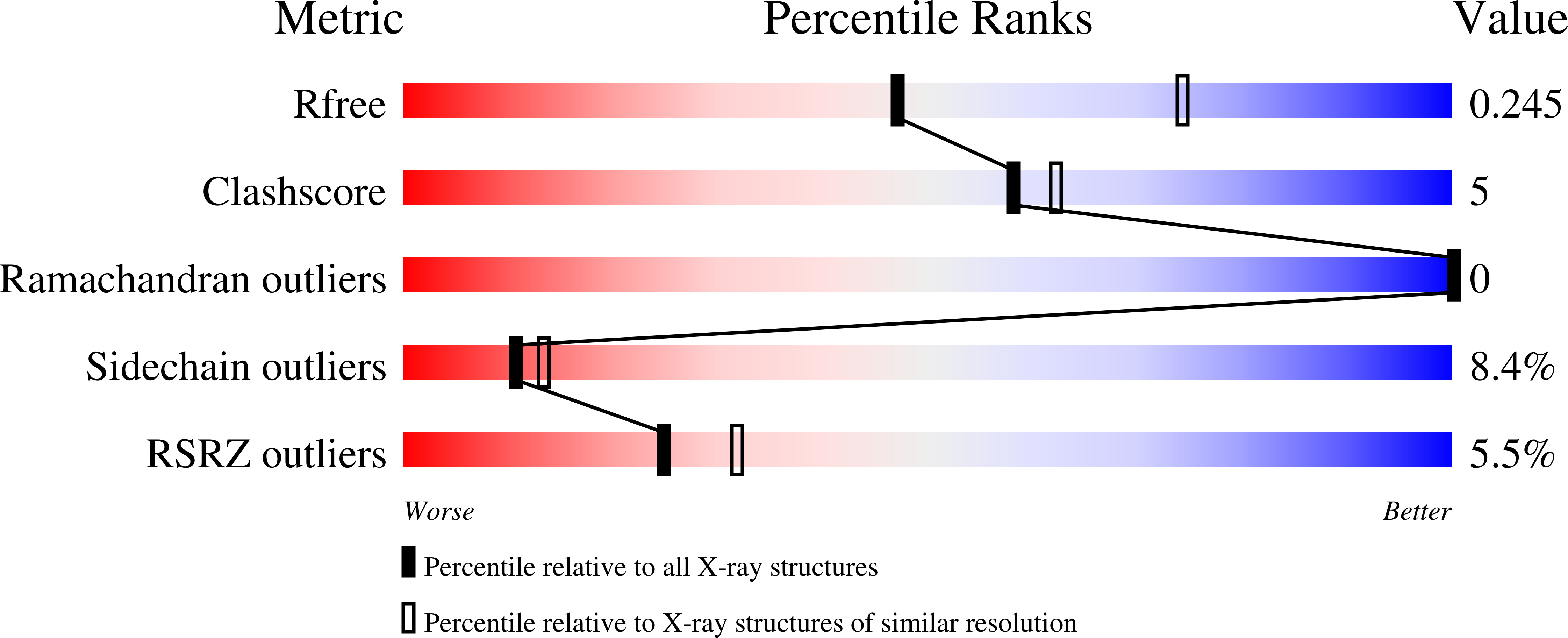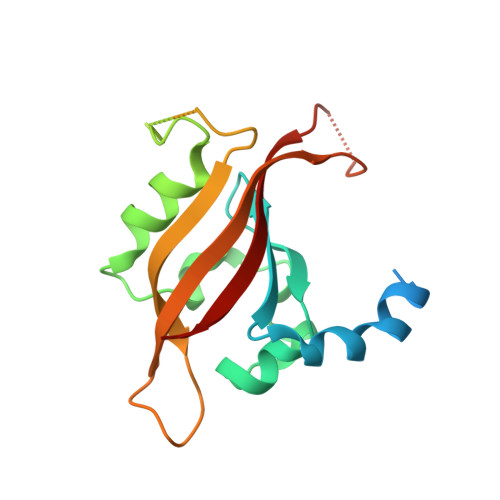Structure and dimerization properties of the aryl hydrocarbon receptor PAS-A domain.
Wu, D., Potluri, N., Kim, Y., Rastinejad, F.(2013) Mol Cell Biol 33: 4346-4356
- PubMed: 24001774
- DOI: https://doi.org/10.1128/MCB.00698-13
- Primary Citation of Related Structures:
4M4X - PubMed Abstract:
The aryl hydrocarbon receptor (AHR) is a ligand-dependent transcription factor that binds to xenobiotics and responds by regulating the expression of gene programs required for detoxification and metabolism. AHR and its heterodimerization partner aryl hydrocarbon receptor nuclear translocator (ARNT) belong to the basic helix-loop-helix (bHLH)-PER-ARNT-SIM (PAS) family of transcription factors. Here we report the 2.55-?-resolution crystal structure of the mouse AHR PAS-A domain, which represents the first AHR-derived protein structure. The AHR PAS-A domain forms a helix-swapped homodimer in the crystal and also in solution. Through a detailed mutational analysis of all interface residues, we identified several hydrophobic residues that are important for AHR dimerization and function. Our crystallographic visualization of AHR PAS-A dimerization leads us to propose a mode of heterodimerization with ARNT that is supported by both biochemical and cell-based data. Our studies also highlight the residues of other mammalian bHLH-PAS proteins that are likely involved in their homo- or heterodimerization.
Organizational Affiliation:
Metabolic Signaling and Disease Program, Sanford-Burnham Medical Research Institute, Orlando, Florida, USA.














